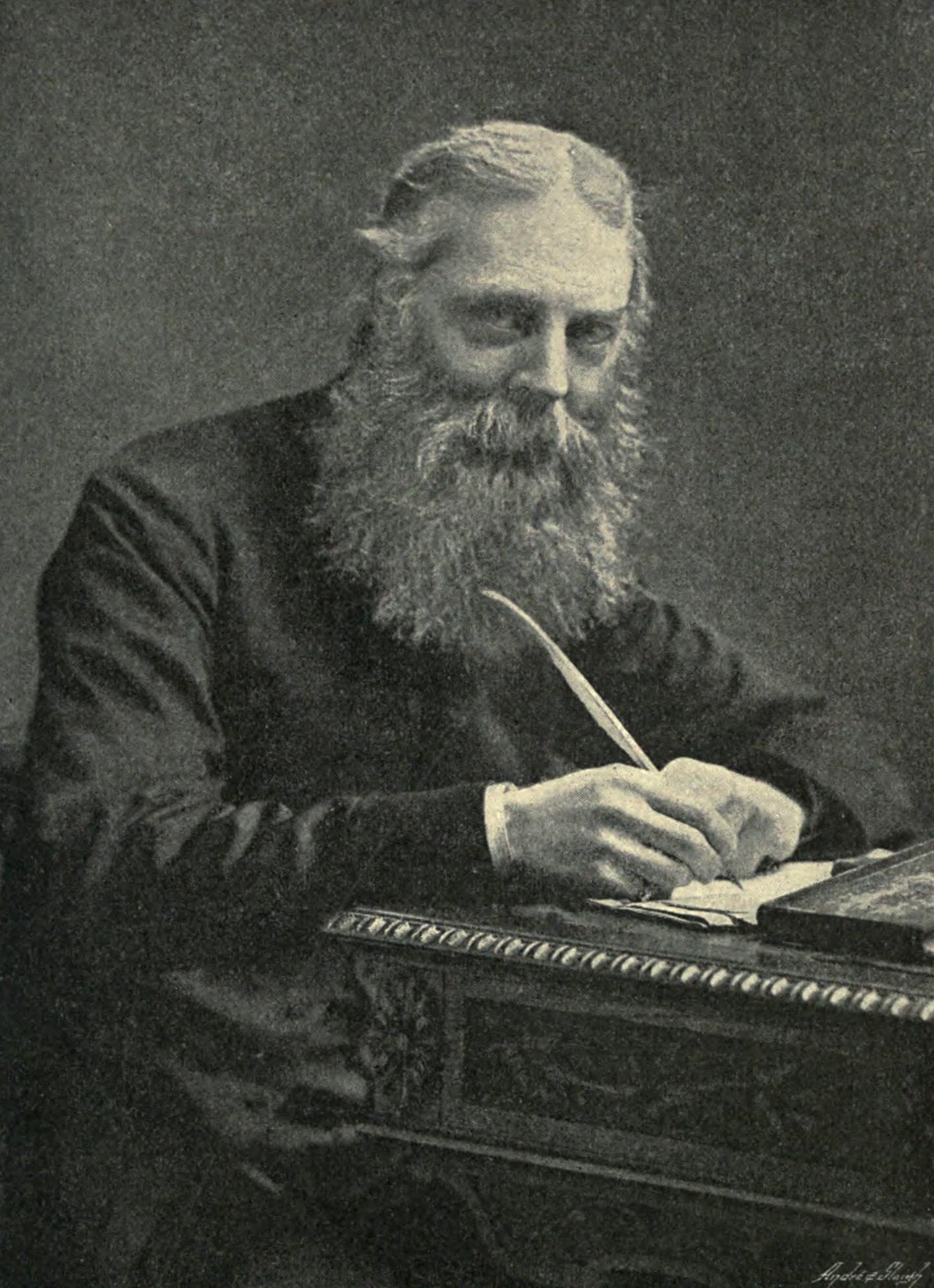 |
| Are you taking notes in Esperanto, Professor? |
I’m going to hazard a guess and assume that in addition to Old, Middle, and Modern English, Gothic (Skeat produced a work on Gothic), and German (Wikipedia notes his annoyance at German domination of English studies in his day), as a member of the clergy (professor and reverend), he probably also knew Latin, Greek, and maybe even Hebrew. That leaves only French (which is a possibility) and Polish (unlikely) to cover the roots of Esperanto.
We can add Esperanto to the languages known by Professor Skeat. An article in the Honesdale Citizen of Honesdale, Pennsylvania on July 30, 1908, noted that:
The eminent philologist, Professor Skeat, is counted among the new converts to Esperanto. He took his first lesson at 4 p. m. and that evening was able to appear before an Esperanto society and translate into English a story written in the new language. But Professor Skeat is an expert linguist. The average learner probably could not hope to master Esperanto in so summary a fashion.The article was pretty old news by the time it hit the pages of the Citizen. The Singapore Free Press and Mercantile Advertiser reported on this event in its November 26, 1906 edition. The article notes that
A book on Esperanto was placed in the hands of the chairman, Professor Skeat, at four o’clock in the afternoon by Mr. W. J. Clark, M.A., of Oxford, who was visiting Cambridge with Mr. H. Bolingbrooke Mudie, of London, to explain the system; and soon after half-past eight Professor Skeat was reading a story in Esperanto, and subsequently giving a free translation in English of its meaning.Harold Bolingbroke Mudie was the founder of the early Esperanto magazine, The Esperantist and the first president of the Universala Esperanto Asocio. I’m going to guess that Mr. Mudie handed Professor Skeat a copy of the Fundamento de Esperanto.
I’m going to disagree with the Citizen. Professor Skeat's feat simply isn't that amazing. In the Fundamento de Esperanto, the grammar takes up five pages[1], and the exercises another fifty-five. By the end of those sixty pages, you’ve got a good basic understanding of Esperanto. If you started at 4 p.m., when do you think you’d hit the end of the exercises?
Professor Skeat was no doubt well accustomed to language study and clearly an intelligent man. Nevertheless, Esperanto really is that easy.
-
Five pages in English. The French takes up six pages. English, German, Russian, and Polish each take up five pages. ↩
You can follow my blog on Twitter (@impofthediverse) or on Facebook. If you like this post, share it with your friends. If you have a comment just for me, e-mail me at impofthediverse@gmail.com.
This blog runs solely on ego! Follow this blog! Comment on this post! Let me know that you want to read more of it!
No comments:
Post a Comment